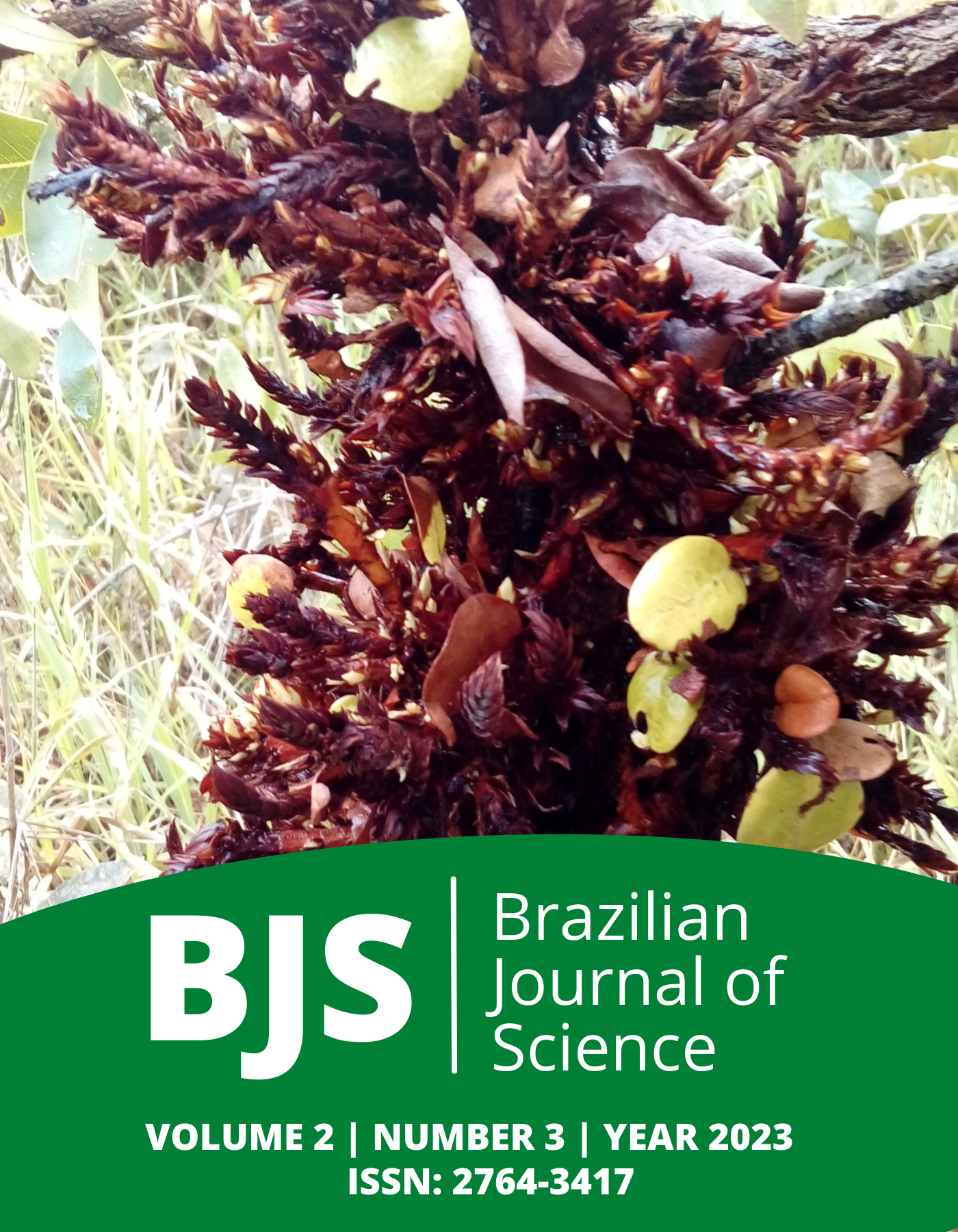Lipid peroxidation within different amaranth cultivars
DOI:
https://doi.org/10.14295/bjs.v2i3.280Keywords:
lipid peroxidation, leaf discs, MDA content, amaranth cultivarsAbstract
In natural environments, plants are exposed to biotic and abiotic stresses during their whole life circle. Moreover, lipid peroxidation is a physiological indicator of the above stress responses, hence is often used as a biomarker to assess stress-induced cell damage or death. This study evaluated the lipid peroxidation of base and stress leaf discs for nine amaranth cultivars. The feasibility of optical density with λ = 532 and λ = 600 nm was investigated, and the malondialdehyde (MDA) concentration intensity was determined using the TBA method, especially the Thiobarbituric acid (TBA) extinction coefficient to detect its content. Furthermore, MDA values were ranging from 0.007 ± 0.001 mM/g-1 to 0.013 ± 0.002 mM/g-1 and from 0.016 ± 0.002 mM/g-1 to 0.035 ± 0.008 mM/g-1 for base and stress conditions respectively. This study represented high MDA content under water stress and low MDA content detection in leaves of A. caudatus L., A. hypochondriacus L., A. cruentus L., and A. hybridus L. cultivars. This indication defines the better antioxidant activity of these cultivars.
References
Awasthi, J., Saha, B., Chowardhara, B., Devi, S. S., Borgohain, P., & Panda, S. K. (2018). Qualitative analysis of lipid peroxidation in plants under multiple stress through schiff’s reagent: A histochemical approach. Bio-protocol Journal, 8(8), e2807. https://doi.org/10.21769/BioProtoc.2807 DOI: https://doi.org/10.21769/BioProtoc.2807
Ayala, A., Muñoz, M. F., & Argüelles, S. (2014). Lipid peroxidation: production, metabolism, and signaling mechanisms of malondialdehyde and 4-hydroxy-2-nonenal. Oxidative Mediated Cell Longevity, 2014, 1-31. https://doi.org/10.1155/2014/360438 DOI: https://doi.org/10.1155/2014/360438
EloCheck Application Note 1. (2022). In: Optical densities in biotechnology - biotronix GmbH, Biotronix. Available in: http://www.biotronix.de/Data/EloCheck_Application_Note_1.pdf. Access in: 05 Jan. 2023.
Heath, R. L., & Packer, L. (1968). Photoperoxidation in isolated chloroplasts. Archives of Biochemistry and Biophysics, 125(1), 189-198. https://doi.org/10.1016/0003-9861(68)90654-1 DOI: https://doi.org/10.1016/0003-9861(68)90654-1
Ito, F., Sono, Y., & Ito, T. (2019). Measurement and clinical significance of lipid peroxidation as a biomarker of oxidative stress: oxidative stress in diabetes, atherosclerosis, and chronic inflammation. Antioxidants 8(3), 72. https://doi.org/10.3390/antiox8030072 DOI: https://doi.org/10.3390/antiox8030072
Lukatkin, A. S., Bashmakov, D. I., Al Harbawee, W. E. Q., & Teixeira da Silva, J. A. (2020). Assessment of physiological and biochemical responses of Amaranthus retroflexus seedlings to the accumulation of heavy metals with regards to phytoremediation potential. International Journal of Phytoremediation, 23(3), 219-230. https://doi.org/10.1080/15226514.2020.1807904 DOI: https://doi.org/10.1080/15226514.2020.1807904
Negre-Salvayre, A., Coatrieux, C., Ingueneau, C., & Salvayre, R. (2008). Advanced lipid peroxidation end products in oxidative damage to proteins, potential role in diseases and therapeutic prospects for the inhibitors. British Journal of Pharmacology, 153(1), 6-20. https://doi.org/10.1038/sj.bjp.0707395 DOI: https://doi.org/10.1038/sj.bjp.0707395
Sari, A., Kursat, M., & Civelek, Ş. (2012). Determination of MDA levels in the plant (Some Salvia L. Taxa Growing in Turkey). Journal of Drug Metabolism & Toxicology, 3(3), 1-2. http://dx.doi.org/10.4172/2157-7609.1000117 DOI: https://doi.org/10.4172/2157-7609.1000117
Tandey, R., Chouhan, K. B. S., & Sen, K. K. (2020). Physiological and biochemical responses of Amaranthus cruentus to polycyclic aromatic hydrocarbon pollution caused by thermal power units. Environmental Science Pollution Response 27, 14790-14806. https://doi.org/10.1007/s11356-020-07971-6 DOI: https://doi.org/10.1007/s11356-020-07971-6
Tao, L. (2015). Oxidation of polyunsaturated fatty acids and its impact on food quality and human health. Advanced Food Technology Nutritional Science, 1(6), 135-142. http://dx.doi.org/10.17140/AFTNSOJ-1-123 DOI: https://doi.org/10.17140/AFTNSOJ-1-123
Vasilaki, A. T., & McMillan, D. C. (2011). Lipid peroxidation. In: Schwab, M. (Ed.), Encyclopedia of Cancer. Springer, Berlin, Heidelberg. https://doi.org/10.1007/978-3-642-16483-5_3373 DOI: https://doi.org/10.1007/978-3-642-16483-5_3373
Downloads
Published
How to Cite
Issue
Section
License
Copyright (c) 2023 Sylvestre Havugimana, Irina Sergeevna Kiseleva, Elena Petrovna Artemyeva, Daniel Nsengumuremyi

This work is licensed under a Creative Commons Attribution 4.0 International License.
Authors who publish with this journal agree to the following terms:
1) Authors retain copyright and grant the journal right of first publication with the work simultaneously licensed under a Creative Commons Attribution License that allows others to share the work with an acknowledgement of the work's authorship and initial publication in this journal.
2) Authors are able to enter into separate, additional contractual arrangements for the non-exclusive distribution of the journal's published version of the work (e.g., post it to an institutional repository or publish it in a book), with an acknowledgement of its initial publication in this journal.
3) Authors are permitted and encouraged to post their work online (e.g., in institutional repositories or on their website) prior to and during the submission process, as it can lead to productive exchanges, as well as earlier and greater citation of published work.




